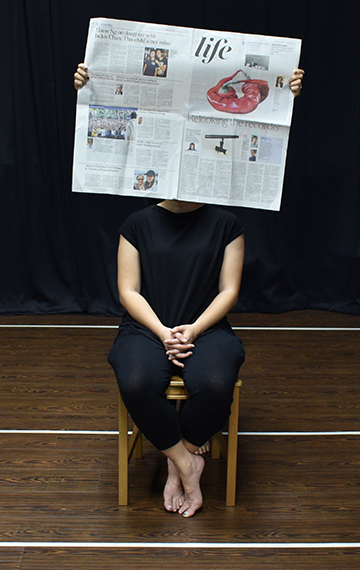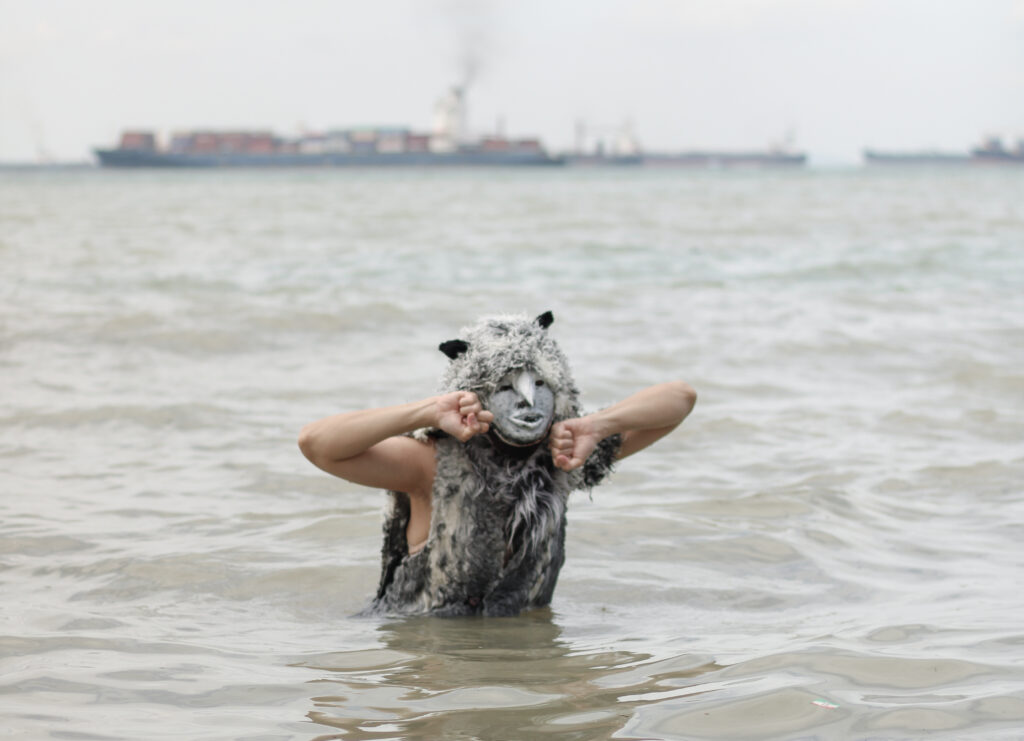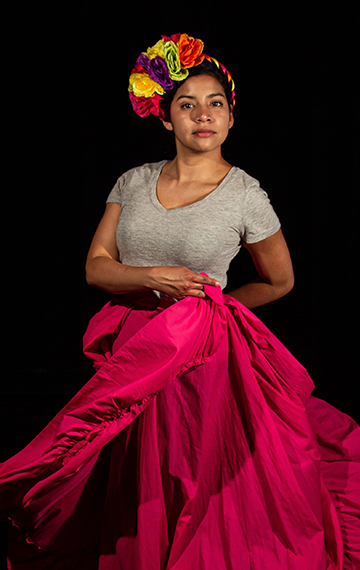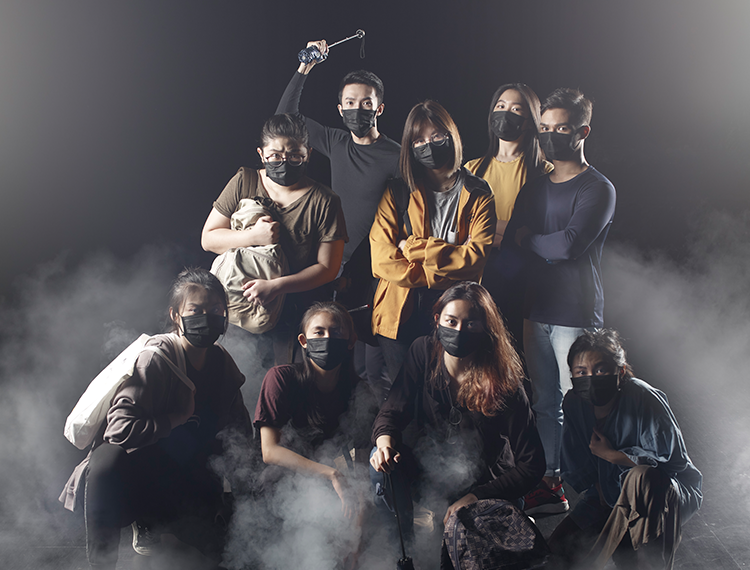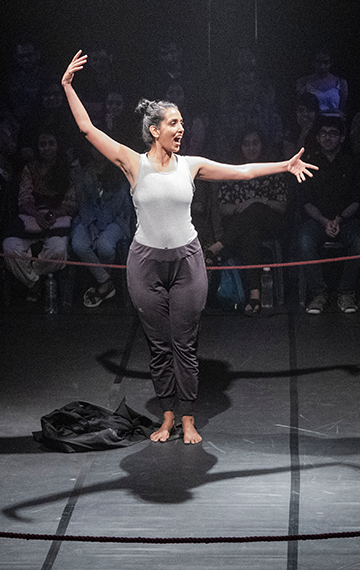“Well versed in the rich Apsara tradition, they deepen it with contemporary improvisation, choreography, music and a willingness to authentically parlay their personhoods to cultivate growth and understanding of contemporary Khmer affirmation.” —Jinx Davis, Living Arts Corporation, on New Cambodian Artists
Two Cambodian dancers in their early twenties reflect on their efforts to get a grip on their lives as female contemporary artists in a popular provincial tourist destination. COVID-19 has changed the town into a dystopian movie set: a huge temple complex with no visitors, hundreds of hotels, restaurants and bars closed and empty, all expats gone, no tuktuks. Over 50% of the population is unemployed and the government made a new law that forbids women to wear short skirts.
The dancers hang on to each other, trying to keep their balance using the language they learned. Sometimes it feels like you’re dying, sometimes you talk to your inner voice and you liberate yourself by dancing in your underwear.
The voices of family and friends are always present: “Why are you an artist? Why are you not like everyone else? Why aren’t you married? We found you a husband.”
And there is always the shadow of the past—the female artists, dancers, and millions of others murdered by the Khmer Rouge. The history of our country, our parents, us—frozen in time.
Snow White and an Apsara in a short dress snow over their history and slowly, hand in hand, they walk out the door.
RELATION TO THEME
Our working process of Snow Whitening Revisited was deeply affected by the global COVID-19 pandemic. As artists, we could not ignore the impact this worldwide crisis has had on our work, and this project in particular. Guided by our artistic response, the project has started to develop into a new direction and experienced new influences.
We looked back at our repertoire, investigating the core imagery of the past years, and questioning our position in Cambodian society and the arts scene, with the leading question of our exploration: why are images of an old tradition, when put in a different light, so provocative to a lot of people?
In the revisited version of Snow Whitening, we investigate our own imagery as a way of asking questions about the importance of traditions, and the role women play in keeping those traditions. It is men who say traditions are of great importance, but it is women who have to maintain them. We will let our dance and images speak and in doing that, ask questions about our positions as women and as artists. In our country, neither asks questions.
Our investigation starts at the beginning of our modern history: The portraits of female artists killed in S21 during the Khmer Rouge regime define us and our society. We look for them, we feel their pain, we honour them. We step out of their white nothingness until a simple laptop brings us back into the future. From here on, we step into our freedom to go anywhere.
“Well versed in the rich Apsara tradition, they deepen it with contemporary improvisation, choreography, music and a willingness to authentically parlay their personhoods to cultivate growth and understanding of contemporary Khmer affirmation.” —Jinx Davis, Living Arts Corporation, on New Cambodian Artists
Two Cambodian dancers in their early twenties reflect on their efforts to get a grip on their lives. They are female contemporary artists in a popular provincial tourist destination. COVID-19 has changed the town into a dystopian movie set. A huge temple complex with no visitors. Hundreds of hotels, restaurants and bars closed and empty. All expats gone, no tuktuks. Over 50% of the population is unemployed. The government made a new law that forbids women to wear short skirts.
The dancers hang on to each other, trying to keep their balance using the language they learned. Sometimes it feels like you’re dying. Sometimes you talk to your inner voice. You liberate yourself by dancing in your underwear.
The voices of family and friends are always present: “Why are you an artist? Why are you not like everyone else? Why aren’t you married? We found you a husband.”
And there is always the shadow of the past. That of the female artists, the dancers, and millions of others murdered by Khmer Rouge. The history of our country, our parents, us— frozen in time.
Snow White and the short dressed Apsara snow over their history. Slowly, hand in hand, they walk out the door.
RELATION TO THEME
COVID-19 affected the working process of Snow Whitening Revisited. We could not ignore the impact this crisis had on our work. It guided the project’s development to a new direction and influences.
We looked back at our repertoire to investigate our core imagery. We questioned our position in Cambodian society and the arts scene. Why are images of an old tradition, when put in a different light, so provocative?
In the revisited version of Snow Whitening, we investigate our own imagery. We ask questions about the importance of traditions, and the role women play in keeping those traditions. It is men who say traditions are important, but it is women who have to maintain them. We will let our dance and images speak. Through the performance, we ask questions about our positions as women and as artists. In our country, neither asks questions.
Our investigation starts at the beginning of our modern history: The portraits of female artists killed in S21 during the Khmer Rouge regime define us and our society. We look for them, we feel their pain, we honour them. We step out of their white nothingness until a simple laptop brings us back into the future. From here on, we step into our freedom to go anywhere.







